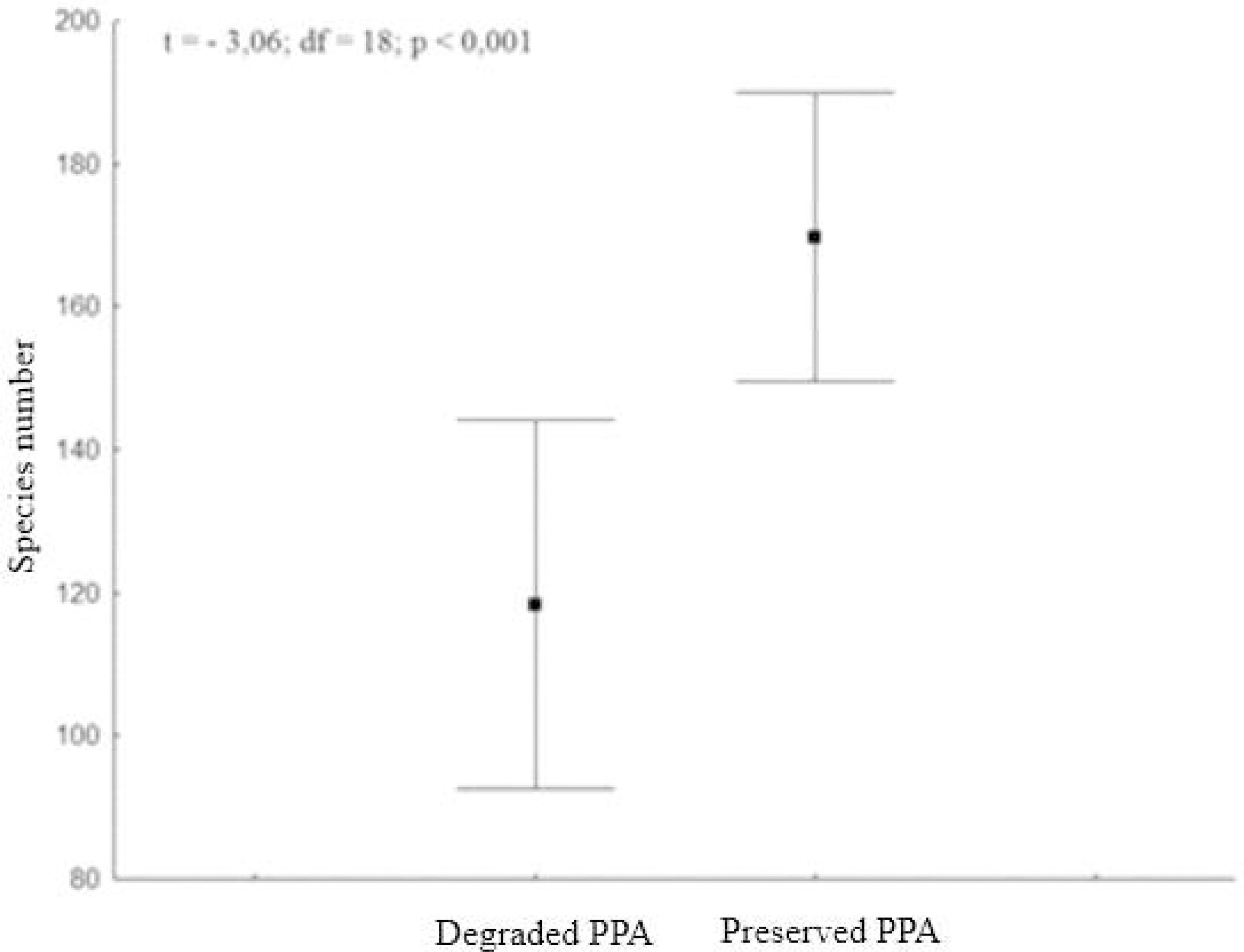ABSTRACT
Permanent preservation areas (PPAs) adjacent to drainage channels may include forests, savannahs, or grassland Under a former environmental legislation ("Forest Code"), it was required to maintain a strip of native vegetation (at least 30 m wide) at the margin of any drainage channel, to support environmental functions. Under the current native vegetation protection policy, if a riparian margin was degraded prior to 2008, the landholder is required to regenerate a strip of only 5-20 m, in some cases. The present study evaluated and compared the ligneous vegetation structure in 10 preserved PPAs (following the requirements of the old law) and 10 degraded PPAs (conforming to the current environmental legislation), in Mineiros municipality, southwest Goiás. Sixty plots measuring 15 m × 30 m were delineated, and data for all ligneous individuals with a diameter at breast height (DBH) ≥ 5 cm were recorded. A total of 2,662 individuals were documented, distributed among 208 species. Of the total, 1,573 individuals belonging to 167 species were from the preserved PPAs, and 1,089 individuals across 142 species were from the degraded PPAs. According to these results, the preserved PPAs were richer in species composition than in the degraded PPAs (245.5 ± 34.36 and 213.3 ± 34.1, respectively), in addition to being more abundant in terms of individuals. The importance value index (IVI) was well distributed among the species. All the degraded PPAs presented signs of erosion. It was concluded that the reduced width of the PPAs (5-20 m) under the current native vegetation protection policy would result in a loss of the environmental functions sought by the legislation..
Keywords:
Phytosociology; Forest Code; Environmental losses


